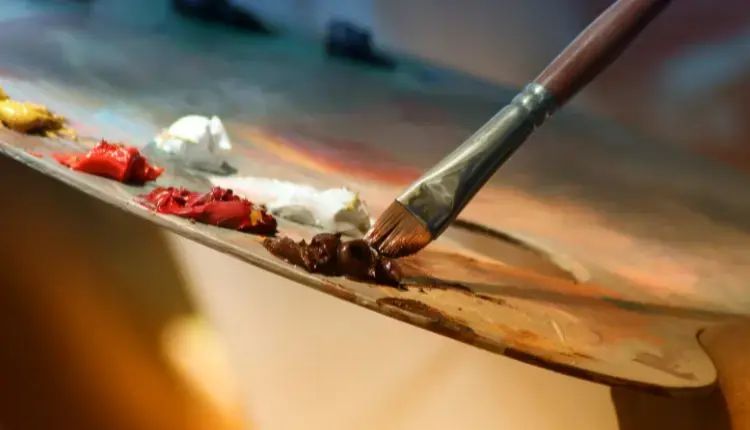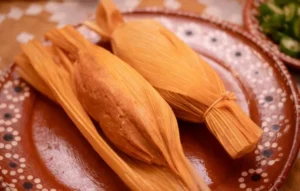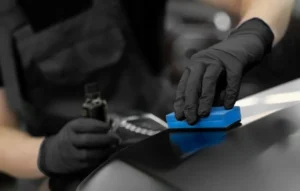Oil painting is a timeless art form known for its rich colors, smooth blending, and depth. However, one common challenge artist’s face is its slow and unpredictable drying time. Unlike acrylic or watercolor, which dry quickly, oil paints can take anywhere from 24 hours to several weeks to dry, depending on various factors.
Understanding how long does it take for oil paint to dry is essential for planning layers, avoiding smudging, and ensuring the longevity of your artwork. The drying time depends on the thickness of the paint, the type of pigments used, environmental conditions, and the painting techniques applied.
If you’re wondering how to speed up the drying process or how different oils affect drying time, this guide has you covered. We’ll explore everything from drying stages to expert techniques for faster drying, helping you make informed decisions and work efficiently with oil paints.
Table of Contents
ToggleUnderstanding Oil Paint Drying Time
Oil paint drying time varies widely depending on multiple factors. Unlike water-based paints, oil paint dries slowly, which can be both an advantage and a challenge for artists. Let’s explore the drying process and how it compares to other paint types.
How Long Does It Take for Oil Paint to Dry?
Oil paint typically takes 24 hours to several weeks to become dry to the touch. However, full curing can take six months to a year, depending on the thickness of the paint and environmental conditions.
Why Oil Paint Takes Longer
Unlike acrylic or watercolor, oil paint does not dry by evaporation. Instead, it dries through oxidation, a process where oil reacts with oxygen in the air and hardens over time. This slow drying process allows artists to blend and manipulate colors longer but requires patience.
Comparison with Other Paint Types
- Acrylics: Dry within minutes to hours, making them ideal for quick projects.
- Watercolors: Dry almost instantly as the water evaporates.
- Oil Paints: Require days, weeks, or even months, depending on layers and oil content.
Factors That Affect Oil Paint Drying Time
Several factors influence how long oil paint takes to dry. From the type of pigment used to environmental conditions, understanding these variables can help you manage drying time effectively.
What Influences the Drying Time of Oil Paint?
Paint Thickness & Layering
- Thick Applications: Heavy layers, such as those in impasto painting, can take weeks or months to dry completely.
- Thin Layers: The glazing technique, where paint is applied in thin, translucent layers, dries much faster, often within a few days.
Pigment Type & Oil Content
Some pigments contain natural drying agents, while others take longer.
- Fast-Drying Pigments:
- Cobalt blue
- Burnt umber
- Raw sienna
- Slow-Drying Pigments:
- Titanium white
- Alizarin crimson
- Cadmium colors
If your painting contains slow-drying pigments, expect a significantly longer drying time.
Environmental Factors
- Temperature: Warmer temperatures increase oxidation, helping paint dry faster.
- Humidity: High humidity slows drying because it reduces oxygen availability.
- Ventilation: Good airflow speeds up oxidation and prevents oil accumulation on the surface.
Type of Oil Used in Paint
The drying speed of oil paint is also influenced by the type of oil used in its formulation.
- Linseed oil: Dries the fastest, often within a few days.
- Walnut oil: Slower drying, taking several days to weeks.
- Poppy oil: The slowest-drying oil, ideal for wet-on-wet techniques but takes weeks to months to dry fully.
Understanding these factors can help you adjust your techniques for faster drying when needed.
How to Speed Up Oil Paint Drying Time
While oil paints are known for their slow drying time, there are several techniques you can use to accelerate the process.
Best Methods to Make Oil Paint Dry Faster
Use Fast-Drying Mediums
Adding alkyd mediums such as Liquin or Galkyd can significantly speed up drying. These mediums modify the paint’s composition, helping it dry within 24 hours instead of days.
Apply Thin Layers (Fat Over Lean Rule)
- Thin layers dry faster than thick ones.
- The fat over lean rule means that each subsequent layer should have more oil than the previous one.
- Skipping this rule can cause cracking, peeling, or prolonged drying times.
Work in an Optimal Environment
- Keep the room at 70-75°F (21-24°C) for faster drying.
- Reduce humidity levels below 50% using a dehumidifier.
- Increase ventilation with a fan or open windows to boost oxygen exposure.
Choose Faster-Drying Oils
- Linseed oil dries in 1-3 days, making it the best choice for underpainting.
- Poppy and walnut oils are slower-drying and should be used for final layers.
Use an Oil Paint Dryer (Siccative)
Adding cobalt driers or lead-based driers can speed up the oxidation process. However, use these sparingly, as too much can cause paint brittleness.
By following these techniques, you can cut drying time significantly and make your workflow more efficient.
Common Mistakes That Slow Down Drying

If your oil paint is drying too slowly, you might be making some common mistakes. Avoiding these errors can help your painting dry efficiently without compromising its quality.
What Not to Do When Drying Oil Paint
Using Too Much Oil
- Adding excessive oil slows drying and may cause yellowing over time.
- Stick to fast-drying oils like linseed oil rather than walnut or poppy oil.
Skipping the “Fat Over Lean” Rule
- Thick layers before thin ones can cause cracking.
- Always apply leaner layers first and build up with more oil-rich layers.
Working in a Poor Environment
- Cold rooms (below 60°F/15°C) drastically slow down oxidation.
- Damp conditions prevent proper drying, leading to a tacky surface.
Using Slow-Drying Pigments in Early Layers
- Avoid pigments like Titanium White and Cadmium Red in the first layers.
- Use faster-drying colors like Burnt Umber or Cobalt Blue instead.
By correcting these mistakes, you can ensure smoother and quicker drying for your oil paintings.
Oil Paint Drying Time Chart
Understanding the drying times of different oil paint colors is essential for layering, blending, and finishing your artwork. Some pigments dry faster than others due to their chemical composition and the type of oil binder used. Knowing these variations can help you plan your painting process effectively, ensuring smoother transitions and preventing unwanted blending or cracking.
Quick Reference Guide: Drying Times of Common Oil Paint Colors
Below is a quick comparison of drying times for popular oil paint pigments:
| Color | Drying Time (Touch Dry) |
| Burnt Umber | 1-2 days |
| Cobalt Blue | 2-3 days |
| Titanium White | 5-7 days |
| Alizarin Crimson | 7-10 days |
| Cadmium Red | 5-7 days |
Fast-drying colors like burnt umber and cobalt blue are ideal for underpainting, while slower-drying pigments such as titanium white and alizarin crimson require more drying time. To speed up drying, you can use alkyd mediums, apply thin layers, or work in a warm, ventilated environment.
How Long Before You Can Varnish an Oil Painting?
Applying varnish too soon can lead to moisture getting trapped in the paint, causing long-term damage. Knowing when to varnish ensures the longevity and protection of your artwork.
When Is It Safe to Varnish an Oil Painting?
- Oil paintings take 6 months to 1 year to fully cure before applying final varnish.
- Applying varnish too early can prevent proper oxidation, leading to a sticky or uneven finish.
- If you need to protect your painting before full curing, use a retouch varnish, which allows the painting to continue drying while providing a temporary protective layer.
- To test if your painting is ready, gently press a cotton swab dipped in mild solvent (like odorless mineral spirits) on a small area. If color transfers, it’s not fully cured yet.
- Always apply varnish in a dust-free environment and follow the manufacturer’s instructions for best results.
Conclusion
Key Takeaways:
- Oil paint drying time varies from 24 hours to several weeks, depending on thickness, pigment type, and environmental conditions.
- Following the fat over lean rule, using fast-drying mediums, and controlling temperature and humidity can significantly speed up drying time.
- Always wait 6 months to 1 year before applying a final varnish to ensure the paint is fully cured.
Encouraging Ending:
Mastering oil paint drying times takes practice, but with patience and the right techniques, you can create durable, high-quality artworks. Experimenting with different pigments, mediums, and drying methods will help you find what works best for your painting style. By understanding these principles, you can take full control of your creative process and achieve professional results in your oil paintings.
If you found this guide on how long does it take for oil paint to dry helpful, explore more insightful articles on lifestyle, fashion, and culture at The Fast Upload. Stay informed with engaging and well-researched content!
FAQs
How can I speed up the drying time of oil paint?
To accelerate drying, apply thin layers, use fast-drying mediums like alkyds, and ensure a warm, well-ventilated environment.
Does the type of oil medium affect drying time?
Yes, different oils impact drying times; linseed oil dries faster, while poppy seed and walnut oils slow the process.
Can I varnish my oil painting before it’s fully dry?
It’s best to wait 6 to 12 months before varnishing to ensure complete curing and prevent potential issues.
How do environmental factors influence oil paint drying?
Warm temperatures and good airflow speed up drying, whereas high humidity and cold conditions can slow it down.
Are there specific pigments that dry faster or slower?
Yes, pigments like burnt umber dry quickly, while colors such as titanium white and alizarin crimson take longer to dry.












